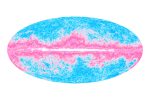A clue to his subject — or his purpose — lies in a word that appears frequently in the titles of the paintings currently on view in Dynamic Equilibrium at 1GAP Gallery, in Brooklyn. The word is “particles,” and the sense in which he means it is suggested in “Large Hadron Collider,” the title of three paintings in this show. A tunnel 17 miles in diameter situated near Geneva, Switzerland, the Hadron Collider is an extraordinarily sophisticated research tool designed to reveal bits of subatomic matter — in a word, particles. Though these phenomena supply Feldschuh with subject matter, he doesn’t try to picture them. Having earned a bachelor’s degree from Harvard in physics, he understands that the actions and interactions of particles can be formulated mathematically but not illustrated visually. His Large Hadron Collider paintings, however, are grandly representational.
Jonathan Feldschuh’s Visions of a Subatomic World
Feldschuh understands that the actions and interactions of particles can be formulated mathematically but not illustrated visually.
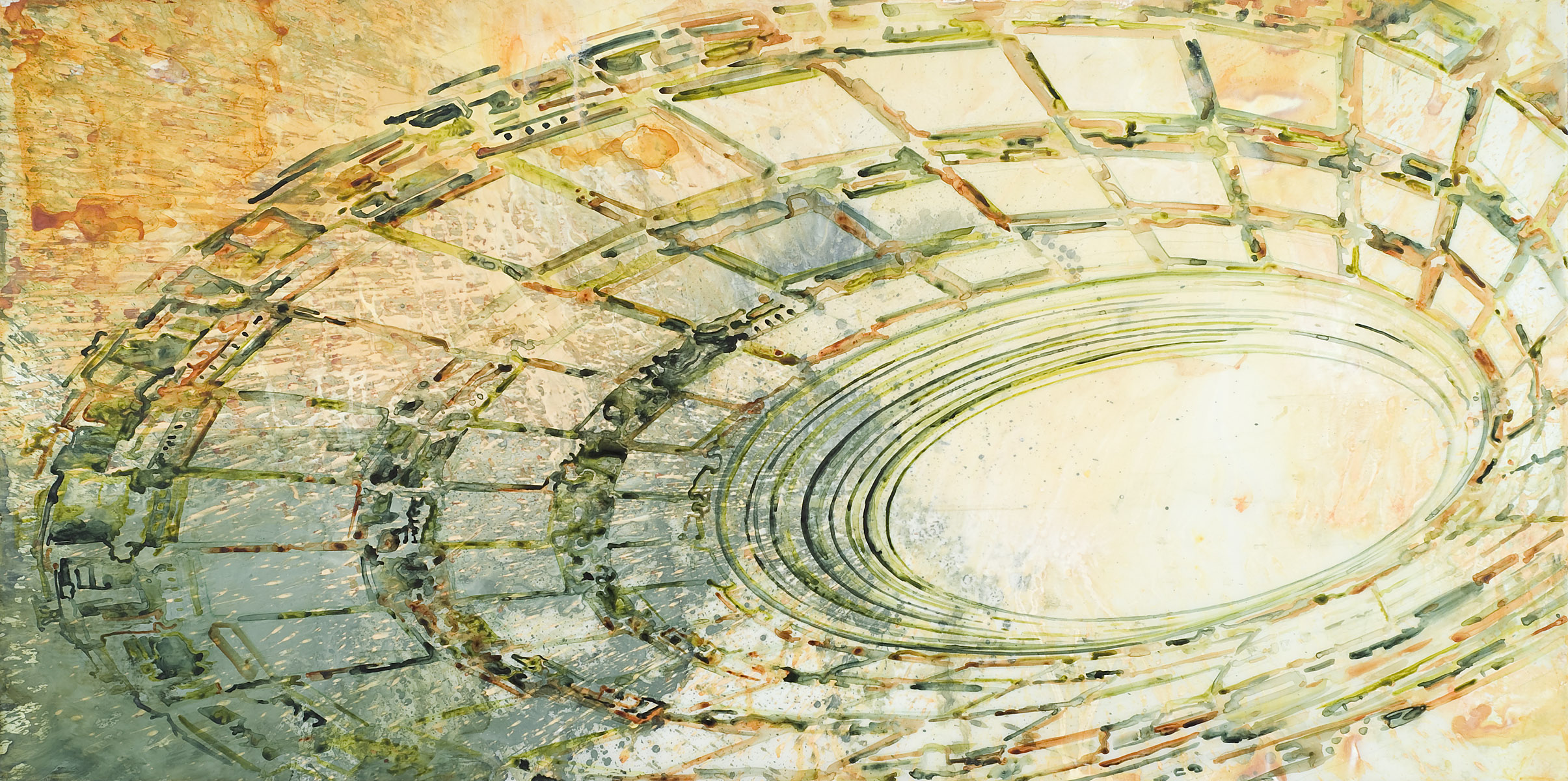
Something like magnetic attraction joins certain descriptions to certain artists. Thus “gestural painter” attaches to Jonathan Feldschuh with automatic ease. How else would you label a painter whose images are the swerving, skidding traces of a wide brush wielded with virtuosic vitality? Feldschuh is a gestural painter, no doubt, and yet this readymade phrase is laden with implications that can lead us astray. Not every geometric abstractionist in the years between the World Wars was a utopian, like Piet Mondrian, nor do brushy bursts of energy always put personality on display, as they do in the early paintings of Joan Mitchell. When Feldschuh sends his brush careening over the surface, he is reaching for something beyond himself.
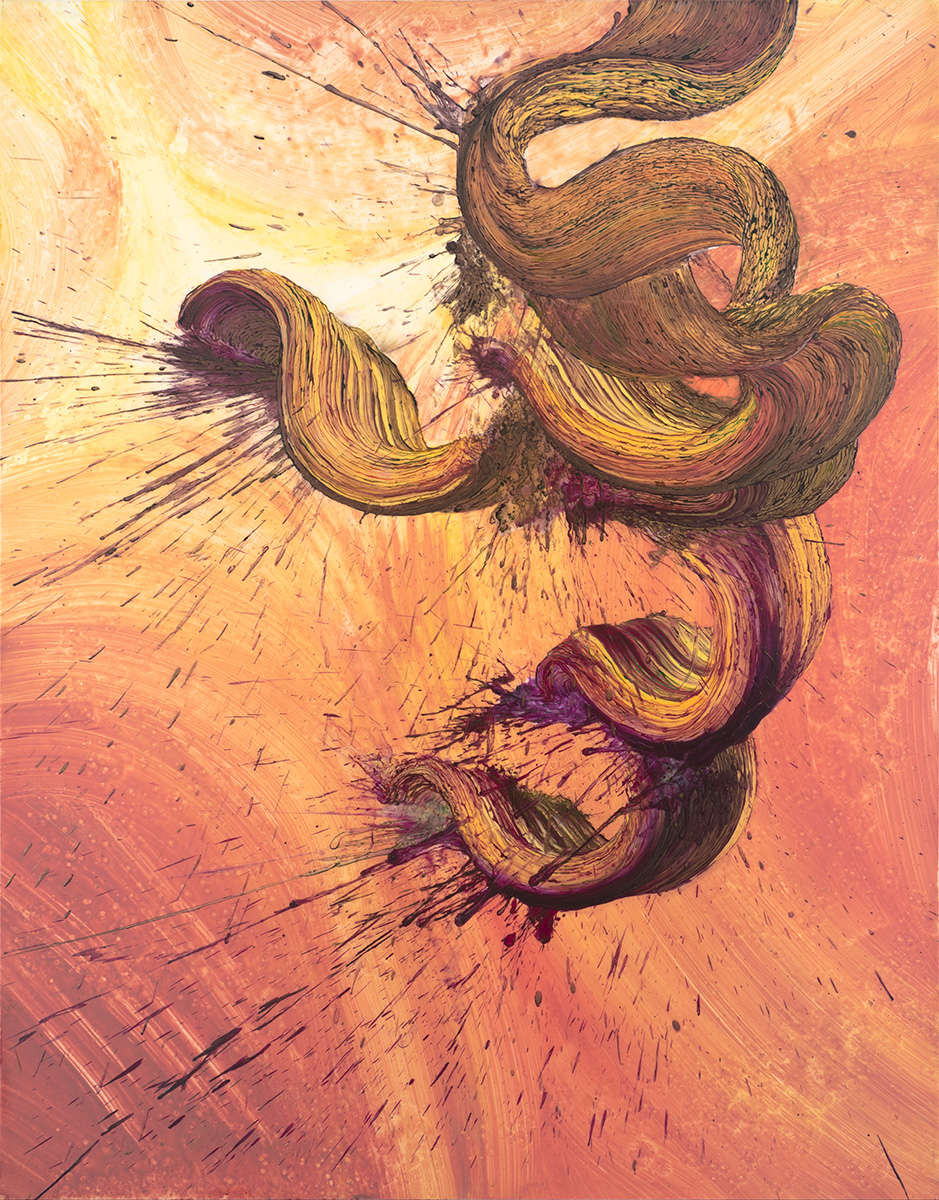
Six feet wide, “Large Hadron Collider #6” (2007) offers a tilted view of concentric ellipses surrounding a flat surface. Feldschuh renders these forms on a sheet of mylar, a transparent material that lets him paint on both sides. On the front side, translucent pale green and orange build the arena-like structure, mark by mark. Splashes of pigment on the reverse side echo the collider’s expansive architecture and provide a spontaneous background to the methodical clarity of the overlying image. “Large Hadron Collider #25” (2011) shows the interior of the collider’s tunnel. That a tall ladder leaning against one of its buttresses looks so very small suggests the immensity of the apparatus. Vaster than a cathedral, it nonetheless has a graspable scale, unlike the subjects of Feldschuh’s Particles paintings, which are unimaginably small.
These works, too, are painted on mylar. In “Particles 65” (2021) six or seven brushstrokes curve vigorously over the surface, each beginning where another ended. At first, they look like a single sinewy swirl of color, then you see their subtly entangled beginnings and endings. Spatters at the initiation of certain brushstrokes suggest the force and speed of Feldschuh’s brush. The recent Particles paintings, especially, are explosive images. They also have a quietly meditative quality, for after he sends swathes of color careening over the mylar, he goes over each one with ink and pen, tracing its curving textures. This emphasizes the form’s trajectory and gives it a three-dimensional solidity — we perceive the painter’s brush marks as forms in space, not as flat forms on a flat surface, and their complexity renders pictorial space itself complex.
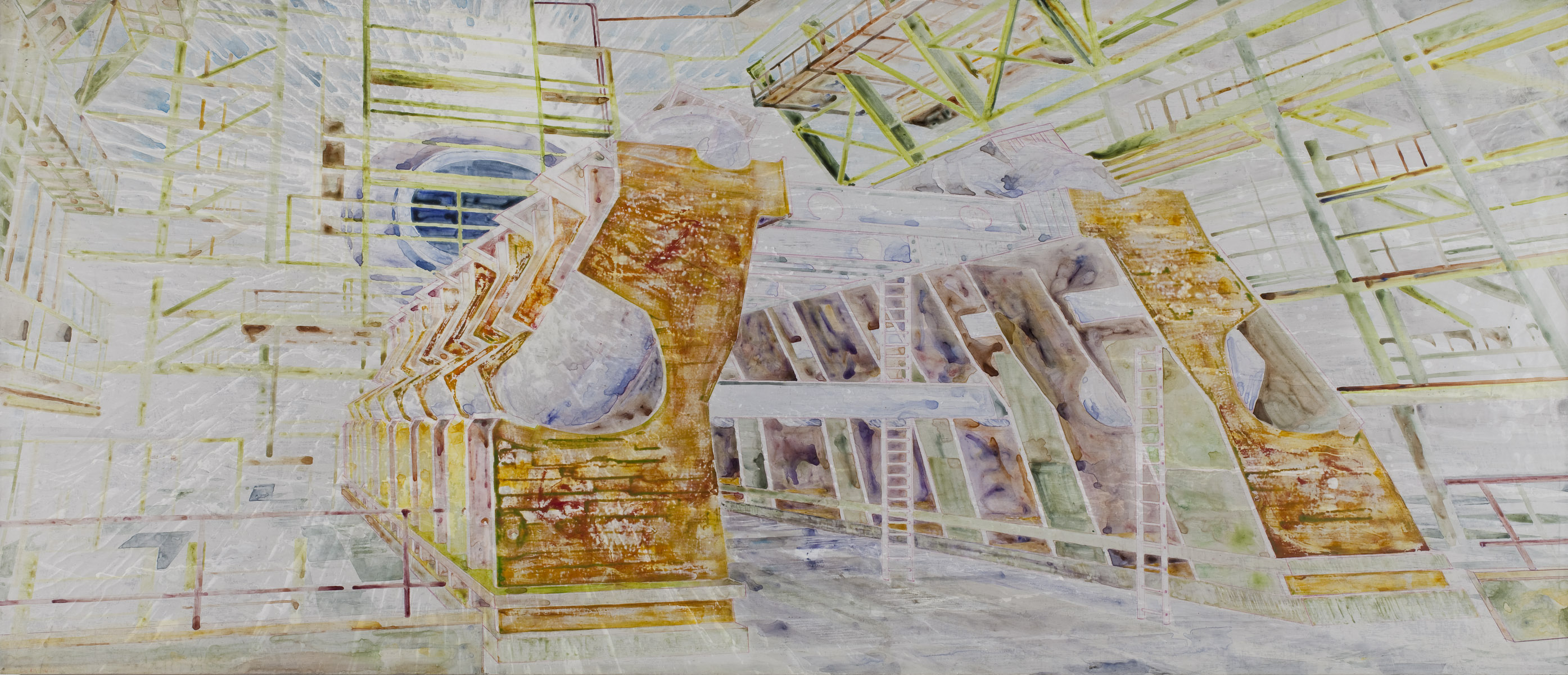
Feldschuh further inflects the space in these paintings with the colors he applies to the reverse sides of his mylar sheets. In “Particles 65,” the result is a bright field that modulates from orange to yellow and white and produces a tilted cruciform effect. These colors recur, with subtle variations, in the overlying brushstrokes. “Particles 66” (2021) looks like “65” an instant later, as if the two paintings were successive stages of the same one. Overflowing with intricately intertwined surges of color, “Particles (Hadron Jet)” (2021), may be in the process of clarifying some primal burst of energy — with emphasis on may. The Hadron Collider series aside, Feldschuh’s art is not mimetic. To see dendrites or tendrils in some of his paintings is inevitable and yet interpretations like these are not to be taken literally.
Light in the Particles series has an affinity with the bright haze filling the Surrealist landscapes of Yves Tanguy. Yet there is nothing like a horizon line in Feldschuh’s images and one feels another, more perplexing difference. Tanguy, Joan Miró, and other quasi-abstract Surrealists meant us to see the light in their paintings as a dream-variant of ordinary light: calm, a bit portentous, and lacking anything so mundane as an identifiable source. In Feldschuh’s paintings, there is no representation of light as we experience it, whether awake or asleep, for these are images of the world at a subatomic scale where photons — the particles that generate visible light — are, like every other kind of particle, invisible to our eyes. With colliders and other instruments, physicists do not see photons so much as register them as instrumental data. What, then, are we to make of the glow that permeates both figure and ground in the Particles paintings? I see it as a charge delivered by the artist’s fascinated command of the world where his imagination resides and seeks an intuitive understanding of being’s elemental essence.
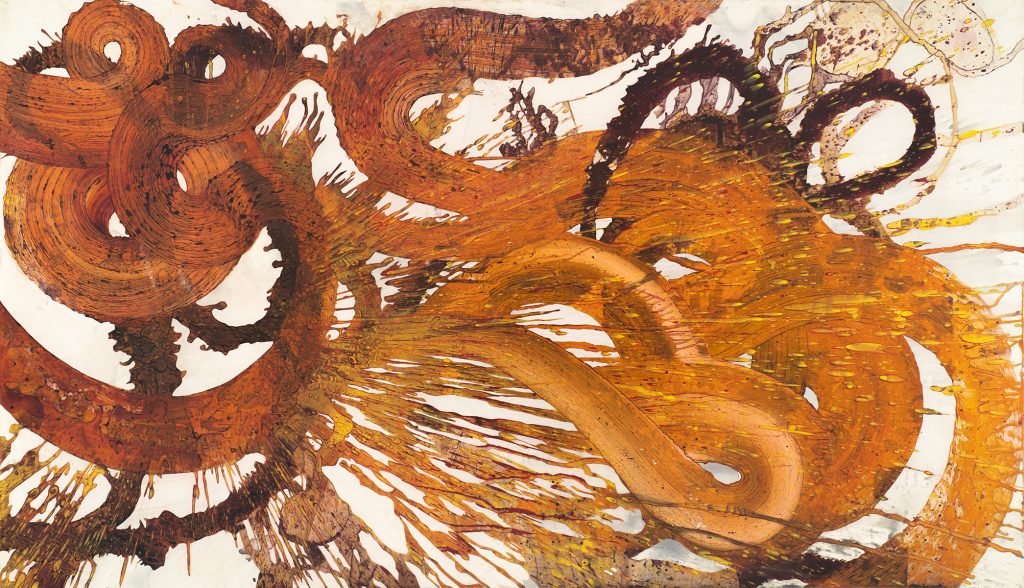
In summoning the idea of the absolutely elemental, Feldschuh’s Particle paintings disentangle it from the procedures of quantum physics. By freeing this absolute from scientific reason the artist delivers it to his imagination — not that reason and imagination are at odds. In fact, they engage and illuminate one another. The standards of scientific rationality do not constrain Feldschuh’s inventiveness. Rather than investigate the elemental with replicable procedures, his art invokes it with images that activate the viewer’s powers of intuition.
Going directly to the intuitable without a thought for the demonstrable, most artists construct realms of sensibility where scientific reason is simply absent. Feldshuh, by contrast, looks to findings in the field of particle physics, not to illustrate them but to open them to our speculative energies. Having found points of departure in science, he foregrounds the process of making paintings and the reciprocal process of responding to them. As art and our experience of it join Feldschuh’s other subjects, we feel a heightened awareness of what it is to look at an image and make our own radiant sense of it.
Jonathan Feldschuh: Dynamic Equilibrium continues at 1GAP Gallery (1 Grand Army Plaza, Brooklyn) through December 14. The exhibition was curated by Fran Kaufman.
Published on Hyperallergic, December 3, 2021
Support Hyperallergic’s independent arts journalism. Become a Member »

